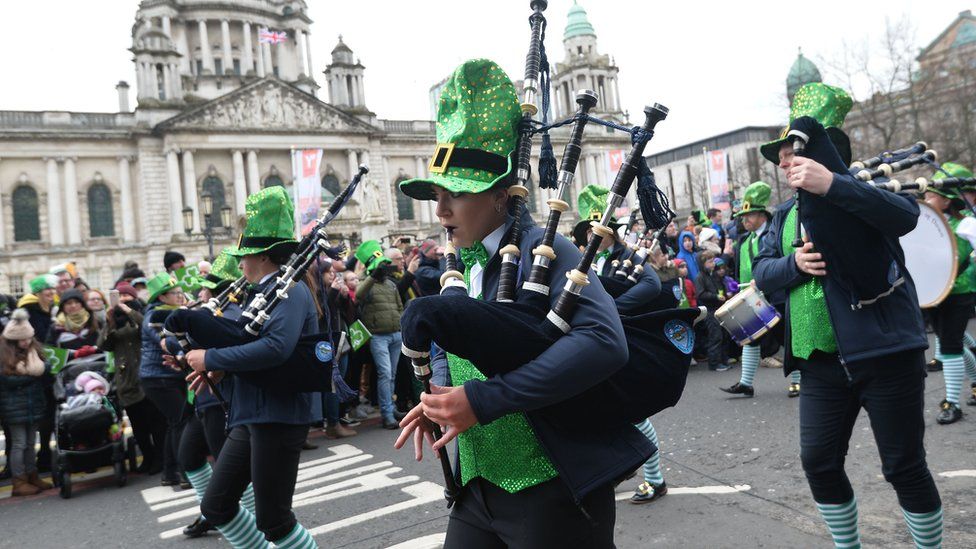History of St. Patrick's Day
by Caitlin Hill
The well-known and widely celebrated holiday of St. Patrick’s Day is celebrated annually on March 17th. It is the saint’s religious feast day and the anniversary of his death in the fifth century. St. Patrick’s Day has been observed for over 1,000 years, so there is a lot of history behind it.
|
Image from BBC
|
St. Patrick is the patron saint of Ireland, and considered to be the nation’s religious messenger. He was kidnapped and brought to Ireland as a slave when he was sixteen. He later escaped, but returned to Ireland and was credited for bringing Christianity to it.
The first parade held to honor St. Patrick’s Day originally took place in the United States in 1762. Along with their music, the parade helped Irish soldiers reconnect with their Irish roots, and helped them to bond with their fellow Irishmen serving in the English army. Irish patriotism among American immigrants flourished, |
sparking the rise of “Irish Aid” societies, helping Irish immigrants thrive. Each group would hold annual parades featuring bagpipes and drums, but in 1848, several New York Irish Aid societies united their parades. This was the first official New York City St. Patrick’s Day Parade and is the world’s oldest civilian parade.
In Chicago, the city dyes the Chicago River green every year. This began in 1962, when they released 100 pounds of green vegetable dye into the river, keeping it green for a week. Today, however, only 40 points of dye is used to minimize environmental damage, keeping the river green for only several hours.
St. Patrick’s Day is now celebrated by people of all backgrounds in the United States, Canada, Australia, Japan, Singapore, Russia, and more.
In modern-day Ireland, some 1 million people annually take part in Ireland’s St. Patrick’s Festival in Dublin, where it features parades, concerts, outdoor theatre productions, and fireworks.
For more information about St. Patrick and the holiday’s history, click on the links below.
In Chicago, the city dyes the Chicago River green every year. This began in 1962, when they released 100 pounds of green vegetable dye into the river, keeping it green for a week. Today, however, only 40 points of dye is used to minimize environmental damage, keeping the river green for only several hours.
St. Patrick’s Day is now celebrated by people of all backgrounds in the United States, Canada, Australia, Japan, Singapore, Russia, and more.
In modern-day Ireland, some 1 million people annually take part in Ireland’s St. Patrick’s Festival in Dublin, where it features parades, concerts, outdoor theatre productions, and fireworks.
For more information about St. Patrick and the holiday’s history, click on the links below.
